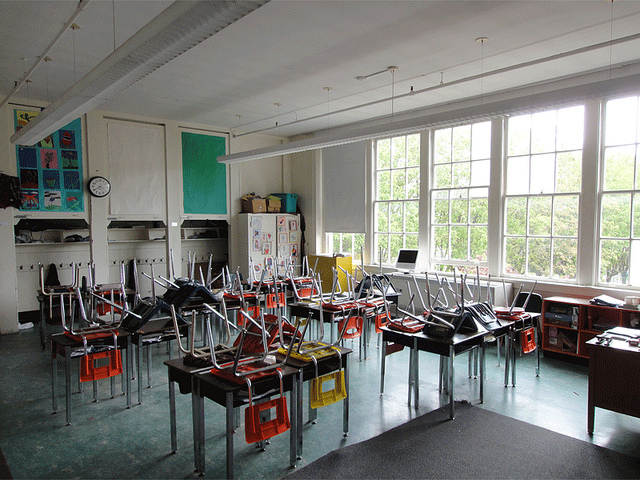Please help rabble.ca stop Harper’s election fraud plan. Become a monthly supporter.
If a compromise is to be reached in the current bargaining between teachers and the government, the long-standing issue of improving class size and composition must be resolved.
The government insists that there is no money to make substantial improvements in this area (notwithstanding multiple court losses telling the province that it must make good on this matter).
But is it really so hard to find the funding to reduce class sizes and ensure adequate ratios and supports for students with special needs?
In truth, it’s a matter of political choice.
According to estimates from the B.C. treasury, the cost of restoring class size and composition to where it was five years ago is approximately $300 million. That’s quite a lot more than the government currently has on the table to deal with this matter. So where could the money come from?
Last year, Iglika Ivanova and I wrote a report entitled Progressive Tax Options for BC, which outlined a host of scenarios for how the province could raise new revenues. Any number of them would produce the needed $300 million.
For example, if the current fifth income tax bracket in B.C. (which only affects people earning more than $103,000 a year) were to increase from 14.7 per cent to 17 per cent, the province would raise about an additional $375 million a year. Notably, under this scenario, most people making over $103,000 would see only modest increases in their taxes. Heck, even someone making half a million dollars a year would see an increase in their tax bill of only about $9,000 (or 1.8 per cent of their total income).
Alternately, if the government created a new tax bracket that kicked in at incomes over $200,000 a year (set at 21 per cent), it would also raise over $300 million. That would only impact the wealthiest 1 per cent of B.C. taxpayers.
But the options for how to structure new upper-income taxes are many.
And an added benefit — these tax options don’t only raise the money needed to substantially improve class size and composition. They do so in a progressive manner, meaning, they simultaneously help to reduce inequality and restore fairness to our overall tax system.
Indeed, there is a poetic logic to funding educational improvements in this way. As recent studies have noted, rising inequality undermines social mobility and equality of opportunity. Meaning, the more unequal a society is, the harder it is for people (and their children) to move up (or down) the income ladder — a reality that has led British epidemiologists Richard Wilkinson and Kate Pickett to propose that if Americans really wanted to live the American dream of “rags to riches,” they have to move to Denmark or Sweden. Similarly, Canadian economist Miles Corak, a leading expert in this area, has found that inequality undermines social mobility, and notes that a key mitigating factor are public goods, notably public education.
So why not increase taxes on wealthier people in order to fund education improvements that are particularly important to lower-income people and kids with special needs? It has the double benefit of reducing inequality, while enhancing equality of opportunity.
Photo: Gee Willi/flickr



